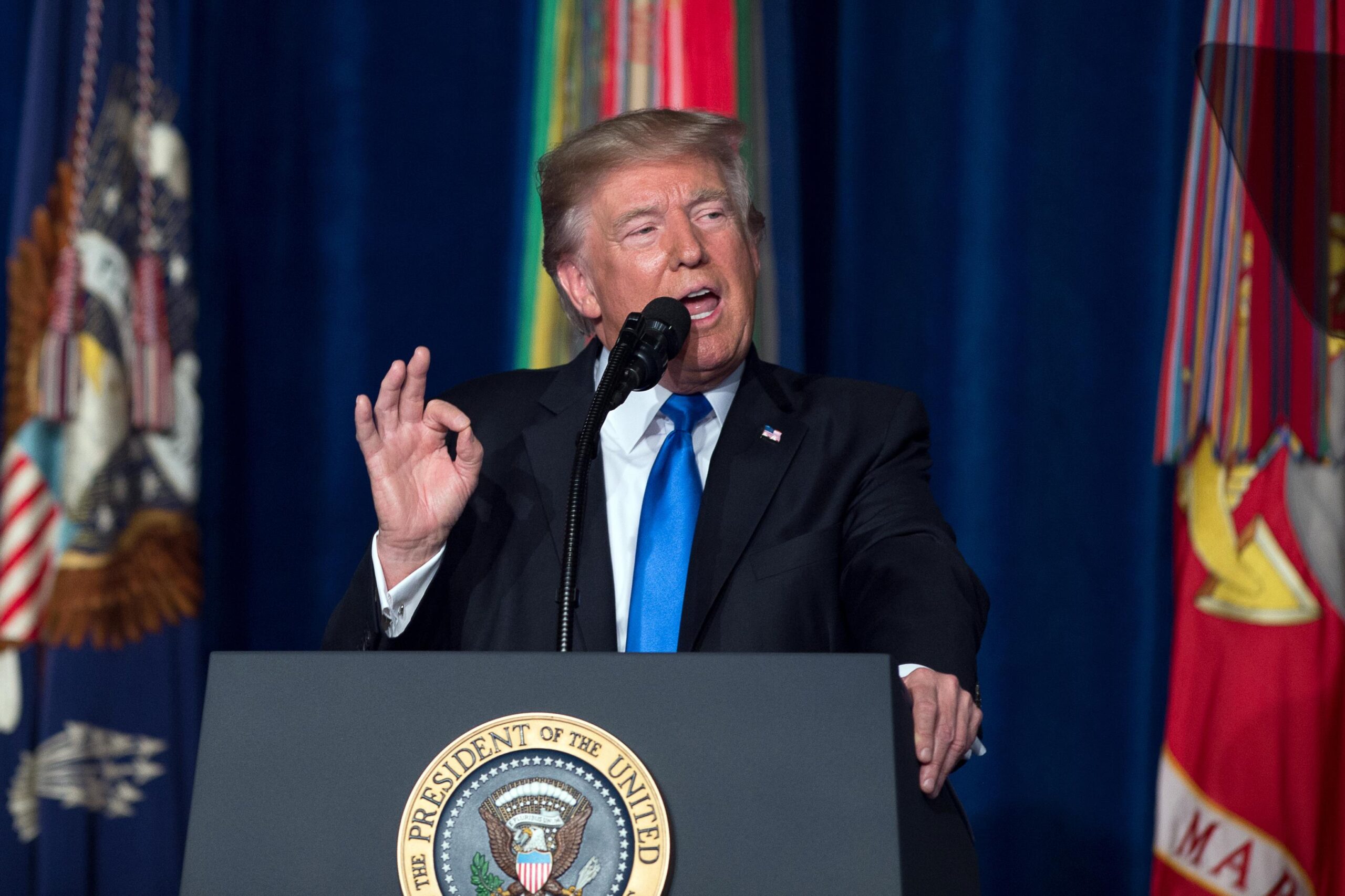President Donald Trump has indicated that his administration is preparing a new wave of sanctions on Russia, marking what he described as “phase two” of Washington’s economic campaign against the Kremlin. Speaking to reporters at the White House on September 7, 2025, he confirmed that additional measures are under consideration, though specifics remain unclear. His remarks came just hours after Russia launched its largest aerial assault of the war, striking multiple Ukrainian cities and setting part of a central government complex in Kyiv ablaze.
The timing of Trump’s comments underscores how Moscow’s intensification of strikes, the absence of progress in ceasefire talks, and pressure from Kyiv and European capitals are reshaping Washington’s calculus. For much of the conflict, Trump balanced threats of escalation with signals of openness to talks with Vladimir Putin. Now, with Ukraine battered and Western patience tested, the White House appears poised to tighten the screws.
What “Phase Two” Might Target
While Trump avoided details, conversations among U.S. and European officials point to several potential avenues for escalation. Treasury Secretary Scott Bessent and allied policymakers have hinted at new restrictions on Russian oil exports and possible secondary sanctions on countries that continue to purchase or ship Russian crude. Such measures would build on the G7 and EU price cap system introduced in late 2022 and recently strengthened, aiming to squeeze Moscow’s most critical revenue stream.
In parallel, Brussels is drafting what would be its nineteenth sanctions package since the invasion, considering options from banking restrictions and energy curbs to new controls on dual-use goods. A U.S. “phase two” rollout would almost certainly be coordinated with these European efforts to maximize impact and limit evasion.
Key components under discussion:
Oil price-cap enforcement and shipping. Washington and Brussels are expected to focus on the so-called “shadow fleet” of tankers moving Russian barrels above the cap. This could mean new designations against shippers, insurers, and intermediaries that facilitate evasion through falsified documents and ship-to-ship transfers.
Secondary restrictions. The most contentious option involves targeting third-country buyers of Russian oil, exposing them to limits on U.S. financial services or access to the dollar system. Such steps would force hard choices for refiners and traders in Asia, where dependence on Russian crude remains high.
Financial sector pressure. Additional sanctions on Russian banks or payment systems would deepen Moscow’s isolation and complicate trade settlement. The EU is openly weighing such measures, and coordination with Washington could raise the stakes significantly.
Technology and dual-use choke points. Expanded export controls on electronics, chemicals, and industrial components critical for weapons production remain a core tactic. These restrictions are designed to slow Russia’s defense industry and are expected to tighten further.
Why Now?
The immediate catalyst for Trump’s comments was Russia’s largest wave of strikes since the war began. Ukrainian officials and independent media reported extensive damage across cities, with images of flames consuming a Kyiv government building circulating globally. The scale of the assault hardened calls in Western capitals for stronger action.
Kyiv, for its part, has stepped up its own campaign by targeting Russian energy facilities, including infrastructure linked to the Druzhba pipeline. Ukrainian leaders argue these strikes are vital to cutting off Moscow’s war financing. Within this context, a new sanctions round fits a broader Western strategy: raising the economic and military costs on Russia while reinforcing Ukraine’s defenses against air raids.
Market Implications
Any sanctions escalation will reverberate through global markets, particularly in energy and finance.
Energy. Oil traders are already parsing the implications of tighter enforcement. If Washington and Brussels move aggressively, Russian barrels could face new bottlenecks, reducing discounts on Urals crude or even tightening global supply. This comes on top of the EU’s newly adjusted price-cap mechanism, which is already influencing trade flows. Market volatility in Brent and refined product spreads is almost guaranteed if sanctions significantly impede seaborne exports.
Finance and currencies. Additional banking sanctions would ripple across funding markets, increasing compliance costs and reducing liquidity for Russia-linked transactions. Even the prospect of new designations often prompts de-risking by global banks, creating ripple effects well before measures are formally imposed.
European exposure. Europe remains most vulnerable. Despite significant progress in reducing dependence on Russian energy, the bloc still faces winter demand risks and refinery bottlenecks. The EU’s push for a new sanctions round reflects political will, but implementation details will determine how painful the package becomes for European industry and consumers.
Allies Weigh the Risks
Europe’s leaders have long pushed for tougher measures on Russian revenues, but they remain cautious about inflicting collateral damage at home. Stronger restrictions on oil and finance will appeal to hawkish governments in Eastern Europe, yet broader EU support depends on careful design, carve-outs, and phased rollouts to protect households from price shocks.
In Asia, reactions are more complicated. U.S. allies such as Japan and South Korea share Washington’s strategic objectives but are deeply tied into global energy supply chains. Secondary sanctions targeting major importers could force them into a delicate balancing act between compliance with U.S. rules, energy security, and relations with both Washington and Moscow. This is why any U.S. move toward secondary measures will almost certainly be paired with intense diplomatic outreach to Asian capitals and G7 partners.
The Strategic Rationale
Sanctions are not only about cutting revenue today but also about degrading Russia’s capacity to wage war over time. Both the Biden and Trump administrations have sought to strangle Moscow’s access to capital, technology, and logistics. Trump’s decision to float a “phase two” suggests the White House believes significant untapped leverage remains.
If coordinated with expanded military aid, particularly for Ukraine’s air defenses and industrial resilience, sanctions could amplify battlefield pressure by compounding financial stress inside Russia. For Washington, the logic is straightforward: force Moscow into a war of attrition it cannot finance indefinitely.
What To Watch Next
Several signals will help determine the shape and severity of “phase two”:
-
Announcement mechanics. A formal rollout through Treasury’s Office of Foreign Assets Control (OFAC), alongside State and Commerce, with synchronized EU and G7 actions, would amplify the impact.
-
Scope of secondary measures. Even a narrow application would dramatically raise compliance risks for global energy traders.
-
Energy price response. Any disruption of Russian seaborne exports will be visible in Brent spreads, Urals differentials, and shipping rates.
-
Financial plumbing. New sanctions on banks or payment systems could trigger fresh evasion tactics, making enforcement guidance crucial.
-
Diplomatic choreography. Signals of Trump convening European leaders—or even engaging with Putin—will reveal how quickly this track is moving.
Bottom Line
The White House is signaling a tougher line on Russia at a moment of acute escalation in Ukraine. A “phase two” sanctions package will likely focus on oil revenues, evasion networks, and financial choke points, designed in close coordination with European allies.
The risks are real: higher energy prices, market turbulence, and friction with partners in Asia. But U.S. officials appear willing to absorb some disruption in order to raise the cost to Moscow of sustaining its war effort. For now, the message is unambiguous. Washington is tightening the vise, and markets, allies, and adversaries alike are bracing for impact.

